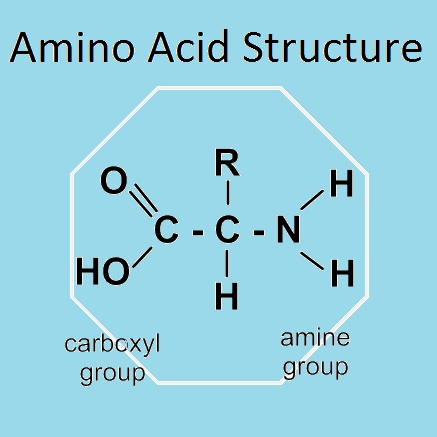Peptide bond structure.
 This short lesson plan students draw a diagram showing the formation of a peptide bond. It could be a homework activity. Students watch a screencast showing simple diagrams to explain the formation of a dipeptide. This builds from basic SL knowledge of amino acid structure. There are slides of further details and some IB style questions.
This short lesson plan students draw a diagram showing the formation of a peptide bond. It could be a homework activity. Students watch a screencast showing simple diagrams to explain the formation of a dipeptide. This builds from basic SL knowledge of amino acid structure. There are slides of further details and some IB style questions.
Lesson Description
Guiding Question
How do two amino acids form a dipeptide molecule?
Activity 1 Drawing a diagram to explain the formation of a peptide bond
This screencast shows a simple explanation of the structure of an amino acid and the formation of a peptide bond.
Use this screencast to make your own notes of the process.
Activity 2: Slides showing the details of peptide bond formation.
Read the slides below, and add details of the parts of an amino acid molecule to your notes from the screencast.
![]() Peptide bond formation worksheet
Peptide bond formation worksheet
Activity 3 IB Style Questions about Peptide bond formation
Answer the following IBstyle questions about peptide bond formation. ![]() Peptide bond IB style questions
Peptide bond IB style questions
.
An alternative activity / extension
Research for specific dipeptide molecules and draw diagrams of their structure.
Here is one example, a dipeptide made from the amino acids glycine and alanine.
To draw more di-pepties use these JSmol 3D visualisation of all the amino acids at Biotopics (no plugin required)
Teachers notes
This lesson could be a homework activity or a short one hour lesson. Students who are already confident about the structure of amino acids and condensation reactions from earlier classes will complete the work quickly.
My experience is that quite a few students need some time to review these ideas before they are able to explain the formation of a peptide bond. Time spent supporting this part of the topic is usually well spent.
An extension for chemists could be to draw a diagram of a dipeptide from a 3D visualisaton.
As an extension activity brighter students could be asked to explain hydrolysis of a dipeptide or to compare hydrolysis to the condensation reaction which forms a dipeptide.

 IB Docs (2) Team
IB Docs (2) Team
